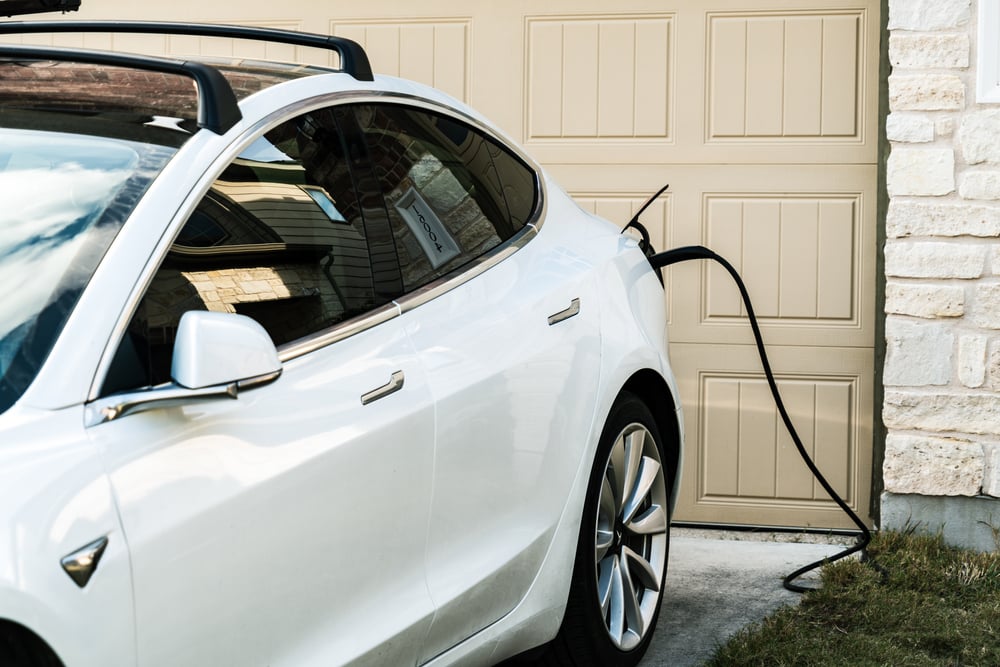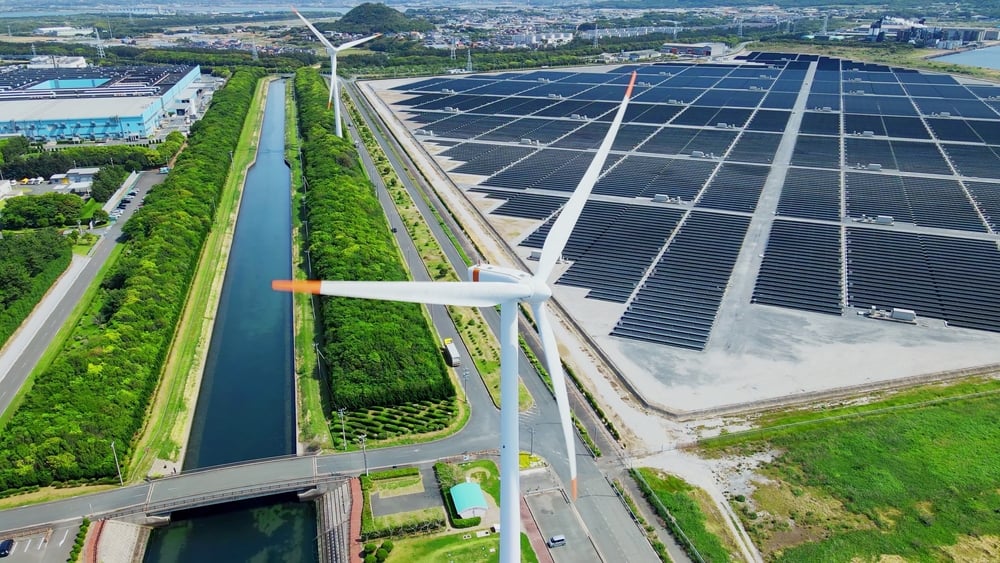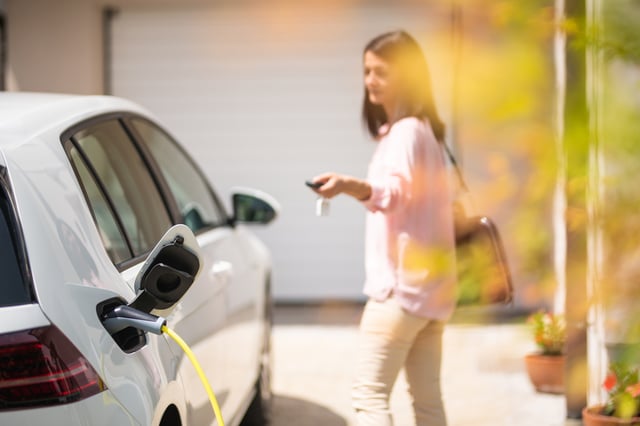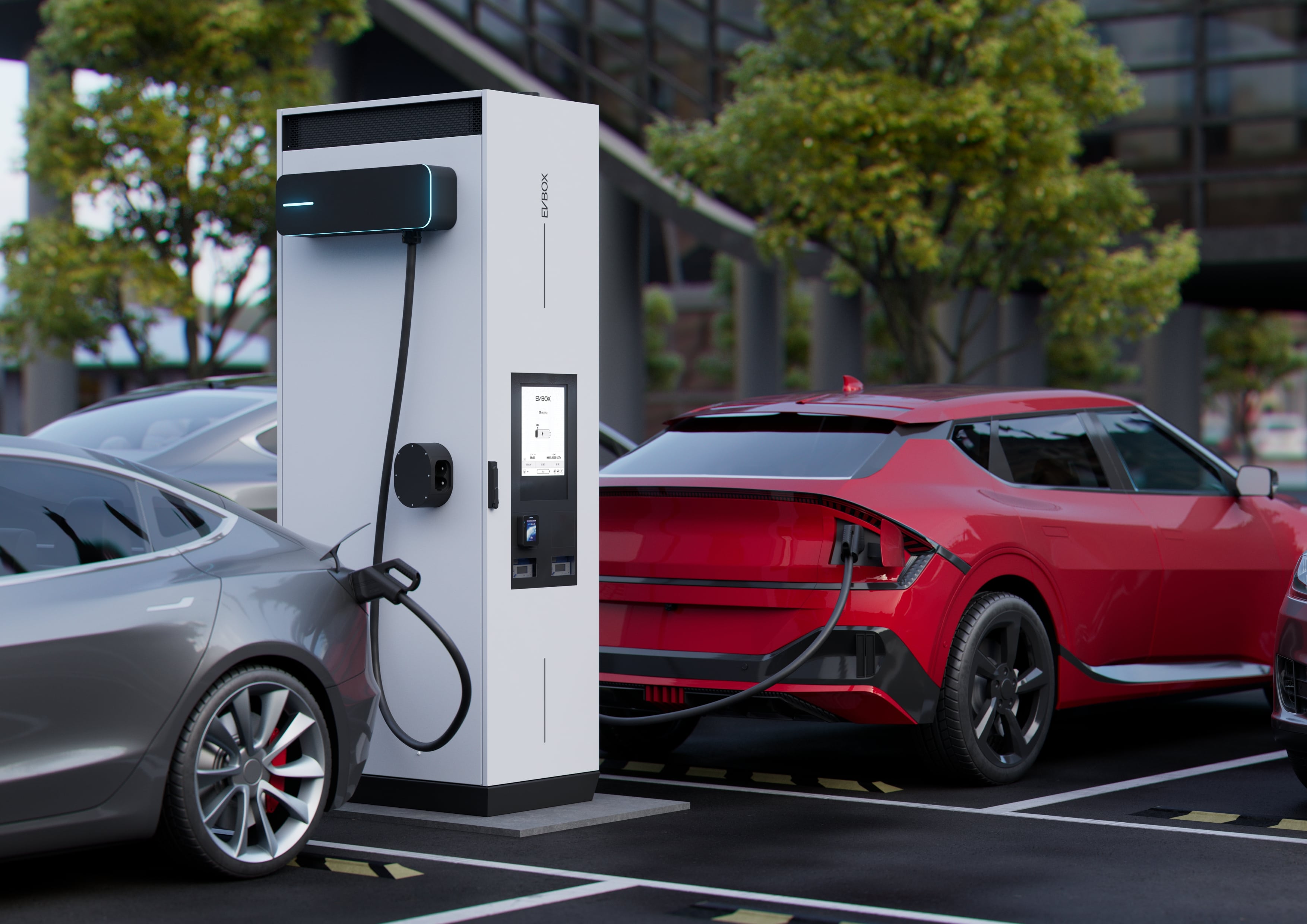
UK's EV smart charging regulations 2022 explained
Electric mobility has been unquestionably emerging in recent years and is expected to continue growing exponentially in the coming decade. Just consider that 2 million electric vehicles (EVs) have been sold globally in the first quarter of 2022, a 75% increase from the same period in the previous year. What’s more, a total of 65 million EVs are projected to be on the road by 2030.
This drastic growth in EV use is placing power grids under strain, and meeting the growing electricity demand is an ongoing challenge for countries across the world. To combat this, governments and individuals are looking at smart charging as a way to manage EV charging loads and optimise energy use.
By enabling connectivity between a charger and the end user, an EV smart charger allows easy monitoring and control of the charging process. This shows great potential for reducing the strain on power grids by allowing EV charging to automatically adjust to changes in load on the grid. This article explores the regulatory environment around smart charging and discusses the policies that the United Kingdom is pursuing.

What is EV smart charging?
Smart charging, also sometimes called intelligent charging, is an umbrella term that can be quite puzzling. So let’s break it down.
The textbook definition is as follows: smart charging is a recharging operation in which the electrical power delivered to the battery is adjusted dynamically based on communication signals.
In layman’s terms, an intelligent battery charger allows communication between an electric vehicle and a charging station. By exchanging data and information, the user has more control over and insights into the charging process and energy usage.
The insights generated by smart charging can be particularly useful for an EV driver, who can decide when and how to charge their vehicle based on charging and cost data. A smart EV charger can also monitor changes in load on the electrical circuit automatically and adjust the charging process accordingly to prevent overloads.
Why smart EV charging regulations?
Installing a smart EV charger unlocks many advantages, both for EV drivers and the grid operator, by making charging more predictable and allowing easier management of peak electricity loads. In addition, the energy system at large will benefit as smart charging allows for more optimal integration of renewable energy sources.

To ensure EV smart chargers meet certain requirements, the UK government is increasingly bringing in new regulations. Generally speaking, these regulations are meant to optimise the charging experience in a few different ways.
User-friendly and accessible EV charging
One of the most crucial aspects of a charging station is its ease of use. A driver should be able to easily understand how a charger works and use it effortlessly. In fact, our research shows that 60% of UK EV drivers say that an easy-to-use interface is one of the most important aspects to consider when choosing a charging station.
As such, a smart charger needs to ensure it is intuitive and accessible, especially in terms of the software interface that connects the charging station to the user, such as a charging app. In some ways, there is a challenge in balancing the quantity of data and insights available to a user, without making the charging interface overly complex or difficult to understand.
Remote EV charging troubleshooting and software updates
Connectivity is a key feature that differentiates a smart charging station from a normal one and enables remote troubleshooting and diagnostics. This way, the charging station provider can easily access a charger’s status and diagnose if something is wrong in real-time. With 1-out-of-4 EV drivers putting (preventive) maintenance services on top of their wish list when purchasing an EV charging station, the need for these types of services is clear.
Not only can this provide immediate troubleshooting, but it also allows technicians to fix some errors entirely remotely, eliminating the need for an in-person visit. Additionally, a smart charger keeps the driver informed about the charging process and alerts them immediately if something goes wrong.
Beyond troubleshooting, connectivity also enables a smart charger to receive periodic software updates, unlocking new features and constantly improving the charger’s user experience.
The energy efficiency of EV charging stations
Besides ease of use and connectivity, energy efficiency is an essential consideration for a charging station: our research shows that 65% of EV drivers consider energy efficiency as their main priority when purchasing an EV charger.
By unlocking insights into the charging process, smart charging allows you to optimise your EV’s energy use and keep costs under control. For example, you can choose to schedule charging during off-peak hours, where you may be able to benefit from a cheaper electricity tariff, and the strain on the grid is lower.

A transparent EV charging experience
As mentioned above, a smart charging station enables real-time control and monitoring of the charging process, which helps guarantee transparency, something 31% of UK EV drivers consider when purchasing an EV charging station. Indeed, EV drivers can know precisely how much power their car consumes at a given moment or what price they are paying for their electricity use. This way, they can understand ways to reduce their consumption or manage costs by optimising the times in which they charge their EVs.
Vehicle-to-grid (V2G) ready
Vehicle-to-grid (V2G) is an emerging technology that enables two-way power flows between an EV and the power grid. Put simply, V2G will allow an electric car to temporarily provide power back into the grid, allowing it to act as a storage system that helps even out peaks in demand. While it is not yet widely available, this technology holds much promise.
As grid operators can leverage these bidirectional flows to manage increasing power demand and prevent overloads. The energy system at large can benefit from the massive storage potential of electric vehicles; aggregated EV fleets could turn their batteries into virtual power plants that can provide power when needed or store renewable energy. Of course, government regulations will be crucial in guiding V2G rollout and ensuring smart charging stations meet adequate specifications for V2G capability.
The UK's EV smart charging regulations

Globally, the United Kingdom leads smart charging regulations, already having adopted a concrete package of measures governing the use of EV chargers. According to the Smart Charge Points Regulations, as of 30th June 2022, all EV chargers sold in the UK for home or workplace use must support a certain level of smart functionality and meet a set of minimum requirements. These regulations concern mainly connectivity, privacy and security, off-peak charging, and phased charging times.
What does it mean for EV drivers and homeowners?
With the introduction of these smart charging regulations, all new sales of EV chargers in the UK must offer a set of minimal features. At the time of writing this article, many EV charging products on the UK market are not yet (fully) compliant. However, they will be soon. To clarify what these new mandatory features are and how they will impact you as an EV driver in the UK, we’ve created an overview below.
Connectivity
A core requirement of the new regulation is that all EV chargers must have an integrated data connection that measures and communicates electricity usage during the charging session. At the same time, this monitoring system allows the charging station to automatically delay or slow the charging, for example, if electricity demand is too high.
Connectivity will typically be managed through an app that allows the user to access information generated by the charging station and manage the process according to their needs and preferences. This ability to monitor a charger will also be beneficial for the manufacturer to notice and troubleshoot problems remotely.
Off-peak charging
To combat peaks in electricity demand, all new chargers sold from 30th June 2022 must be set by default to avoid charging during peak hours, specifically between 8am and 11am and 4pm to 10pm.
This is aimed at increasing grid stability and allowing grid operators to produce electricity more evenly by smoothing out peaks in demand. It is also intended to manage future EV sales growth, ensuring they don’t overload the power grid and cause disruptive blackouts.
Of course, this default setting won’t limit the user, as it can be overridden manually by an EV driver if needed. This way, the user will still be allowed to charge whenever they want but will be nudged to charge at times that are more optimal for the grid – and their wallet.
Indeed, it’s worth considering that many utilities offer cheaper off-peak tariffs at night when electricity demand is lower. As such, this default setting can generate important savings for EV drivers, without them even realising it.
Delayed charging / Phased charging times
To avoid a peak in electricity demand at 10pm from millions of EVs starting to charge simultaneously, the government requires chargers to be able to delay charging by up to 1800 seconds, or 30 minutes, to protect the electricity grid.
This way, EVs can start charging in phases, smoothing out the increase in demand over a longer period, thus making it more manageable. As with the previous features, EV drivers will always stay in control and can manually override the delay if they wish to charge immediately.

Privacy
In a second phase of the new regulations, coming into effect from 30th December 2022, charge points will also be required to meet certain privacy and security standards. In terms of privacy, chargers will need to ensure all data sent to and from the station is encrypted and protected to safeguard user privacy and mitigate the risk from cyberattacks.
The regulations also require users to be able to easily control what data they share and provide ways of deleting any personal data that has been collected. By default, this information will only be retained for 12 months.
Security
Another set of requirements effective from 30th December 2022 relates to security. According to this policy, a charger must be 'designed, manufactured and configured to provide appropriate protection against the risk of harm to, or disruption of, the electricity system and the relevant charge point.'
In other words, chargers will need to ensure they are created in a way that safeguards the user’s safety, prevents damages to the charger, and guarantees the charger won’t disrupt the electrical grid, for example, by overloading it.
What if I already have a charging station?
You may be wondering how this affects you if you already own a charger. The good news is that if you installed a charging station before 30th June 2022, it is exempt from these requirements and will continue working even if it doesn’t have any of the above-mentioned features. However, if you upgrade your charger, or install another one, it will need to meet the new requirements and be capable of smart charging.

As the number of electric vehicles on the road keeps rising, the demand for charging infrastructure will only increase in the coming years. To ensure that infrastructure is present and developed according to certain standards of accessibility, openness, and connectivity, governments around the world are introducing new regulations around EV charging and smart charging specifically.
If you’re considering installing an EV charger at your home, you might be wondering how you can leverage smart charging. To understand how smart charging works and read more about its practicalities, have a look at our in-depth blog.
Related articles

Emerging calibration laws in the fast EV charging market
Calibration laws are legal frameworks adopted by countries around the world to ensure public EV charging stations...

UK's EV smart charging regulations 2022 explained
Electric mobility has been unquestionably emerging in recent years and is expected to continue growing exponentially in...